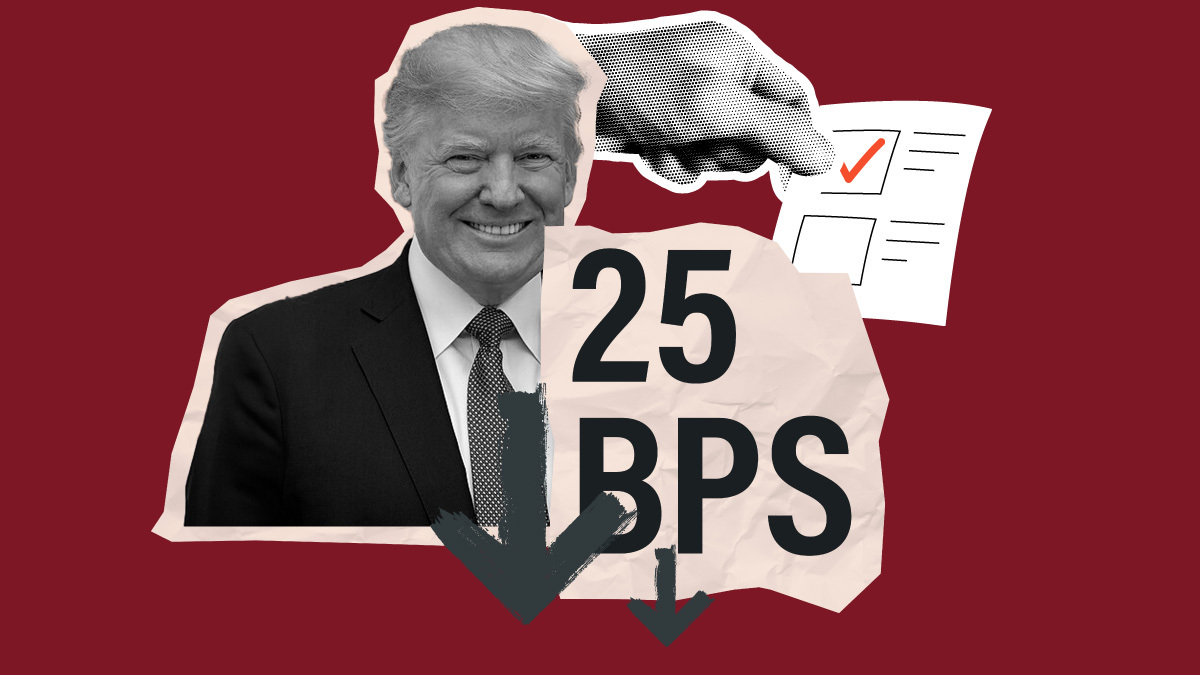“We don’t guess, we don’t speculate and we don’t assume.”
Typically, the Federal Open Market Committee (FOMC) adjusts rates in 25-bps increments. Prior to this week’s meeting, the CME Group‘s FedWatch tool showed that 98% of interest rate traders expected officials to lower rates by 25 bps, while the rest projected rates to remain unchanged.
Despite the Fed’s moves, yields for the 10-year Treasury have increased, reflecting Trump’s more expansive fiscal agenda. On Wednesday, following the election results, yields reached 4.45%. Consequently, the 30-year fixed mortgage rate went up to 6.94% on Thursday, per HousingWire’s Mortgage Rates Center.
Regarding the moves in the bond market, Powell said they appear to be related to the predicted likelihood of stronger economic growth. “We do take financial conditions into account if they’re persistent and if they’re material,” he said. “But I would say we’re not at that stage right now, which is something that we’re watching.”
Future meetings
Fed officials are scheduled to meet again in mid-December and most traders expect another 25-bps cut. But the perception that the Fed may leave rates at the current level is increasing.
“We view greater uncertainty with monetary policy with the Trump victory, especially with concerns related to a potential wave of inflation with the Trump trade, tax, and immigration policies,” wrote a team of analysts at Raymond James in report released Wednesday. “There may be offsets that prevent the second wave of inflation, but the Fed may be more cautious in the upcoming months as it digests the impacts of Trump’s policies.”
First American senior economist Sam Williamson agrees that additional upside surprises on inflation or employment data could influence the Fed to consider taking a December cut off the table. But, in contrast, accelerated economic weakness or a rapid slowdown in inflation could prompt the Fed to take a more dovish approach to policy normalization
“However, over the next year we anticipate further, though gradual, declines in mortgage rates, consistent with the Fed’s longer-term projections on the future path of interest rates, which should help stimulate demand, and to a lesser extent, supply,” Williamson said.
Powell said that the Fed is loosening policy over time to a more neutral level but is also prepared to adjust as the outlook evolves. According to him, if the labor market deteriorates, the Fed will be ready to move more quickly. Alternatively, as the Fed approaches plausibly neutral or close-to-neutral levels, it may be appropriate to slow the pace at which it is dialing back restrictions. But a decision has yet to be made, he added.
Looking at Fed officials themselves, Keefe, Bruyette & Woods analysts forecast potential replacements for Powell and Vice Chair Michael Barr when their terms end in 2026. Potential successors are Christopher Waller, a member of the Fed Board of Governors; Kevin Warsh, a former Fed governor; and David Malpass, a former president of the World Bank Group.
“The Trump victory will usher in the largest change in federal financial regulators in the history of the U.S. The only federal financial regulators that will remain is the leadership at the Federal Reserve,” the Raymond James analysts wrote. “The fate of Chairman Powell will also be debated. We will be watching to see Trump’s selection for Treasury Secretary. The more Trump’s Treasury Secretary can back-channel communications, the greater probability Powell will finish his term.”
Powell declined to comment on fiscal policy or concerns that a Trump administration would affect the Fed’s independence. Journalists asked whether he would leave under pressure from the newly elected president, and he said no, adding that he’s not legally required to do so.
Mortgage pros’ mindset
According to Phil Crescenzo Jr., vice president for the Southeast division at Nation One Mortgage Corp., the market was favorable prior to the Fed’s September meeting, with some clients locking in a mortgage at rates below 6%. Those who waited saw “all the savings just go right out the window because rates moved up so quickly.”
Now, “because we’re going the opposite way, maybe the meeting, the announcements, the election, all these things may swing it back positive,” Crescenzo added. In a market he calls “unpredictable,” he tells clients who can afford to purchase to move forward with their applications.
“We are trying to be safe and cautious but also not missing opportunities,” Crescenzo said.
Shannon Hoff, a senior mortgage adviser at American Pacific Mortgage — a lender with 1,685 sponsored LOs and 426 active branches — said that there are those waiting for rates to go down and those doing business as usual.
“Everything is a mindset. It has definitely been a rough couple of years, but people continue to buy homes and still need refinances to pay off debt or fix up their home,” Hoff said.
Editor’s note: This is a developing story and will be updated.

